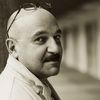Let me start today with a question: if you were asked to name the defining year in the history of 20th century avant-garde art, which year would you choose? Considering the number of high profile museum exhibitions on both sides of the Atlantic commemorating the centennial of the October Revolution in Russia, the answer should be 1917.

Revolution: New Art For A New World, (2017) | Directed by Margy Kinmonth; Foxtrot Films
Tomorrow (Wednesday, March 8), at the Laemmle Theater Royal, we are invited to see the new fascinating documentary titled “Revolution: New Art For A New World”. I had the chance to see this documentary a few days ago and to talk to its director, Margy Kinmonth. If you attend tomorrow’s 7:30 screening at the Royal, which I highly recommend, you will have the chance to participate in a Q&A with the documentary’s director at the end of the screening.

L-R: Kazimir Malevich, Woman with Rake, 1932 | Tretyakov Gallery, Moscow; Kazimir Malevich, Suprematist Painting: Airplane Flying, 1915 | Museum of Modern Art, New York
This feature-length documentary focuses on a momentous period in the history of Russia and the Russian Avant-Garde. Not only do we see the great works by Kazimir Malevich and Wassily Kandinsky along with works of other major Russian artists of this period, we meet with their descendants and hear their (often painful) stories. Many of these artists embraced the Revolution, only later to be forced to abandon their innovative aesthetic in favor of the state-supported Socialist Realism.
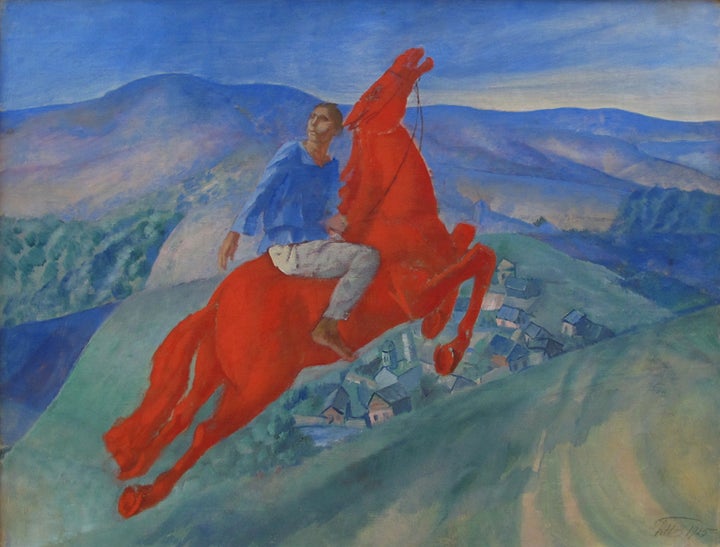
Kuzma Petrov-Vodkin, Fantasia, 1925
While some of these artists were able to leave Russia soon after the Revolution, others stayed and suffered through years of cultural and political repression under Lenin and Stalin. This was a period when a number of Russian artists, writers, and poets ended their lives in the gulag.
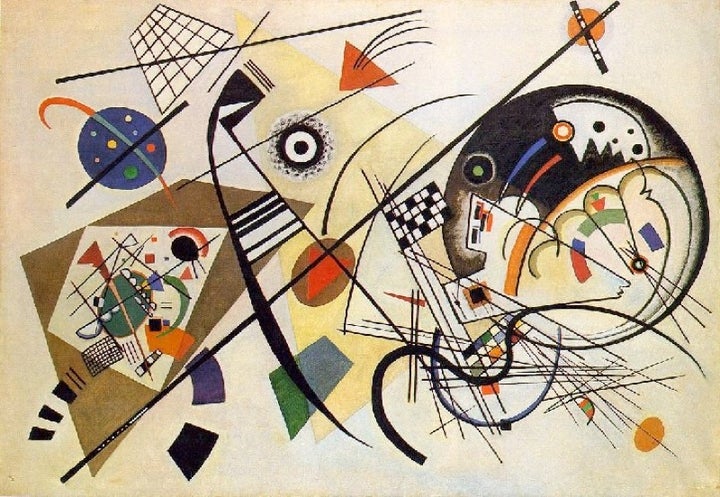
Wassily Kandinsky, Transverse Line, 1923 | Kunstsammlung NRW, Dusseldorf, Germany
Margy Kinmonth, the documentary’s director, did an excellent job of searching through the archives of Russian museums and institutions. Seeing archival footage of Lenin passionately addressing the revolutionary masses brings to mind the staging at the avant-garde Meyerhold Theater in Moscow.
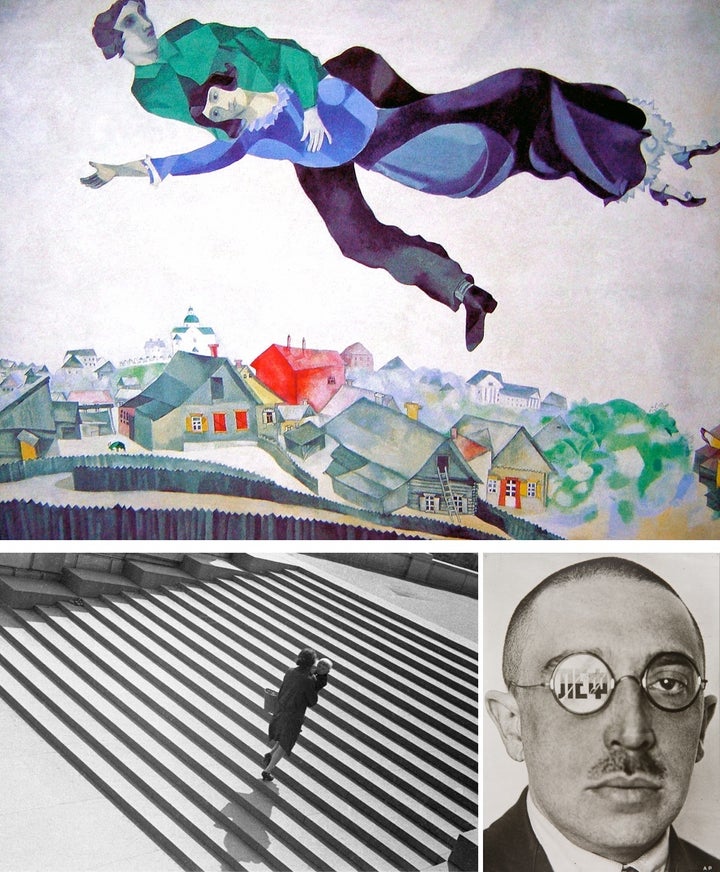
Clockwise from top: Marc Chagall, Over the Town, 1918 | Tretyakov Gallery, Moscow; Alexander Rodchenko, Steps, 1930 | Courtesy of the Rodchenko and Stepanova Archive; Alexander Rodchenko, Critic Osip Brik, 1924 © Estate of Alexander Rodchenko
More often than not, art documentaries deliver a straightforward lecture, similar to what you might expect to hear from a college professor. But Margy Kinmonth’s “Revolution: New Art For A New World” has a welcoming and engaging way of speaking directly to the audience. Considering that it’s her third documentary dealing with Russian culture, the other two, “Hermitage Revealed” (2014) and “Mariinsky Theater” (2008), I was curious to hear from her how this fascination with Russia came to be. Her answer was –– surprise, surprise –– from reading novels by Tolstoy and Dostoyevsky.
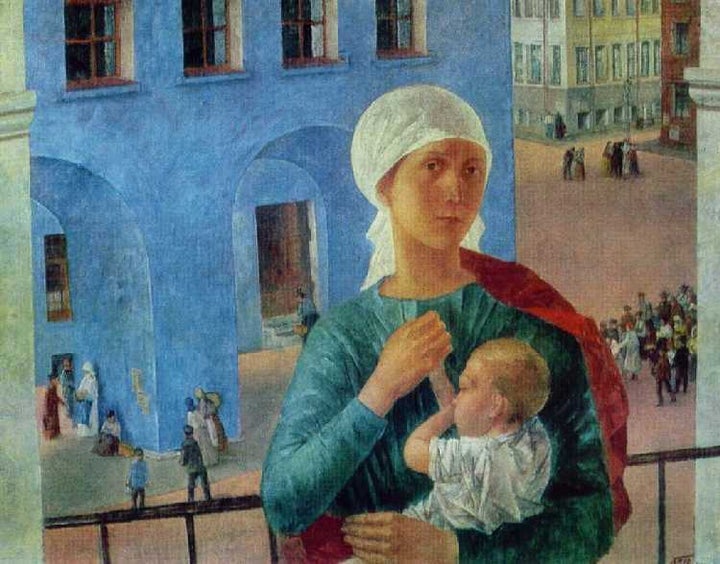
Kuzma Petrov-Vodkin. Petrograd in 1918, 1920 | Tretyakov Gallery, Moscow
If you’re lucky enough to be in New York this week, hurry to MoMA to see its exhibition “A Revolutionary Impulse: The Rise of the Russian Avant-Garde”, which closes this Sunday, March 12. And if you happen to be in London, the Royal Academy of Art has a Russian exhibition of its own, which runs through April 17. This one is titled “Revolution: Russian Art 1917–1932”.
___________
Edward Goldman is an art critic and the host of Art Talk, a program on art and culture for NPR affiliate KCRW 89.9 FM. To listen to the complete show and hear Edward’s charming Russian accent, click here.
To learn about Edward’s Fine Art of Art Collecting Classes, please visit his website. You can also read more about his classes in the New York Times here and in Artillery Magazine.
